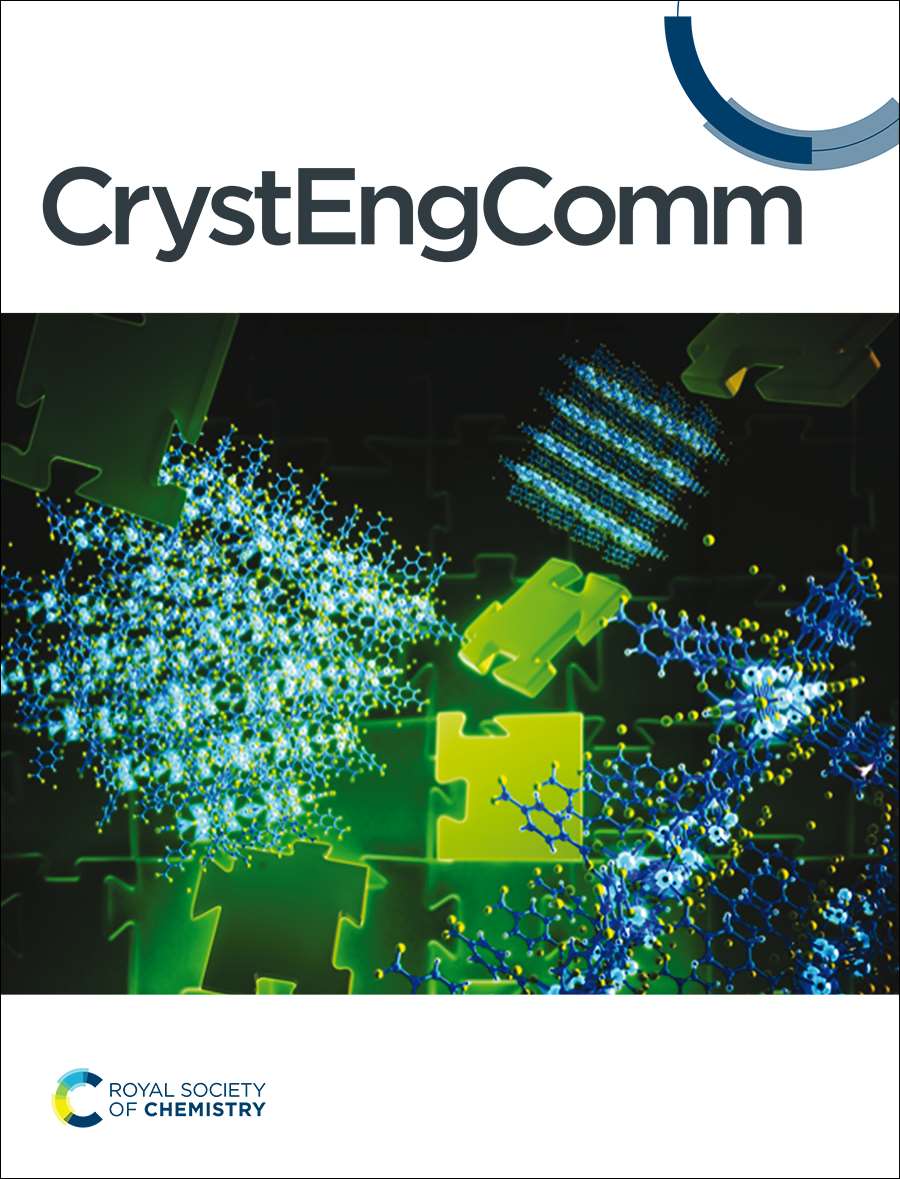机械力诱导的通过联苯部分铰接的耦合希夫碱热致变色到光致变色的转化
IF 2.6
3区 化学
Q2 CHEMISTRY, MULTIDISCIPLINARY
引用次数: 0
摘要
一种联苯二聚希夫碱(bis-SACz)在晶体状态下表现出独有的热致变色性,但在研磨后转变为光致变色非晶态。相比之下,相应的单体(SACz)缺乏这种行为,突出了联苯基团的独特功能。量子化学计算表明,由于显著的能级排列,热致变色增强。本文章由计算机程序翻译,如有差异,请以英文原文为准。

Mechanical-force-induced thermochromic-to-photochromic conversion of a coupled Schiff base hinged via a biphenyl moiety†
A biphenyl-linked dimeric Schiff base (bis-SACz) demonstrated exclusive thermochromism in its crystalline state but transformed to a photochromic amorphous state upon being subjected to grinding. By contrast, the corresponding monomer (SACz) lacked this behavior, highlighting the unique function of the biphenyl group. Quantum chemical calculations suggested enhanced thermochromism due to a significant energy level alignment.
求助全文
通过发布文献求助,成功后即可免费获取论文全文。
去求助
来源期刊

CrystEngComm
化学-化学综合
CiteScore
5.50
自引率
9.70%
发文量
747
审稿时长
1.7 months
期刊介绍:
Design and understanding of solid-state and crystalline materials
 求助内容:
求助内容: 应助结果提醒方式:
应助结果提醒方式:


